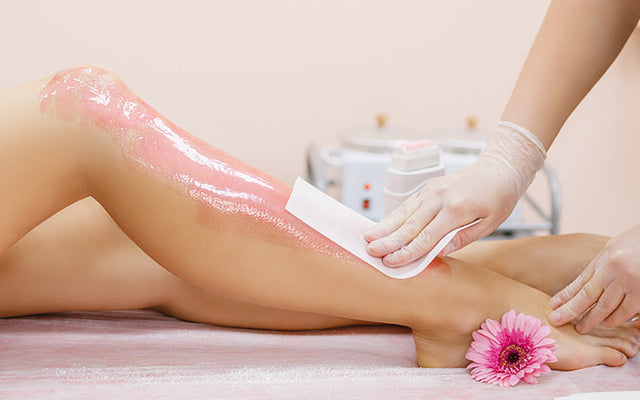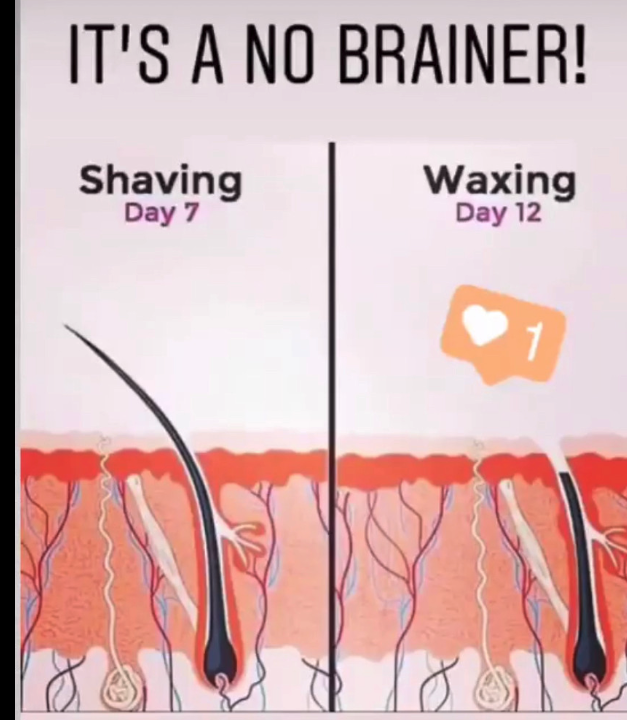Wiki Article
Grasping the Art of Waxing: Essential Tips for a Painless Hair Elimination Experience
In the world of individual pet grooming, grasping the art of shaving is a skill that can significantly boost one's hair elimination experience. The process of shaving, though effective in achieving smooth skin, can frequently be associated with pain and pain if not carried out properly. By comprehending and implementing essential pointers, people can navigate this hair elimination method with ease and marginal pain. From pre-waxing prep work to choosing the ideal wax and mastering correct waxing strategies, the trip to a painless waxing experience is led with expertise and know-how.
Pre-Waxing Preparation
Before going through a waxing session, it is essential to correctly prepare your skin to reduce pain and attain optimal hair elimination outcomes. Begin by scrubing your skin a day or 2 before your appointment to get rid of dead skin cells and stop in-grown hairs. This action helps the wax adhere better to the hair, ensuring an extra effective elimination process. Prevent moisturizing on the day of your waxing session as it can produce a barrier in between the wax and your hair, resulting in much less effective outcomes. Additionally, it is suggested to trim your hair to regarding a quarter of an inch prior to waxing to avoid unnecessary pain throughout the treatment.
Furthermore, it is crucial to clean your skin thoroughly before waxing to get rid of any type of oils, creams, or dust that can disrupt the wax's capacity to hold the hair. This step not only boosts the effectiveness of the shaving procedure but likewise assists lower the danger of post-waxing breakouts - Laser Hair Removal. By complying with these pre-waxing preparation steps, you can ensure a smoother and more comfy hair elimination experience
Choosing the Right Wax
Picking the appropriate type of wax is necessary for making certain a comfy and successful hair removal process. There are numerous kinds of waxes available, each accommodating various skin kinds and hair textures. Both primary classifications of wax are difficult wax and soft wax. Hard wax appropriates for sensitive areas like the face, underarms, and swimsuit line as it sticks just to the hair, making it much less unpleasant for these delicate locations. On the other hand, soft wax is optimal for bigger locations like legs and arms as it is used very finely and gotten rid of with towel strips.
When choosing a wax, consider your skin level of sensitivity, hair density, and the area you plan to wax. Coarse hair may need a wax particularly developed for strong hair removal.
Appropriate Waxing Method
To start, it is important to cleanse the skin thoroughly prior to applying the wax. Furthermore, constantly ensure that the wax is heated to the right temperature level to avoid burns or ineffective hair removal. Using the wax in the direction of hair growth and removing it versus the hair growth assists to hop over to here make certain that the hair is pulled from the origin, resulting in smoother and longer-lasting results.
Additionally, making use of small sections of wax each time and pushing securely on the wax strip before elimination can help boost the efficacy of the procedure. Finally, bear in mind to use mild stress on the skin after waxing to relieve any kind of pain and reduce inflammation. By following these appropriate waxing techniques, you can achieve a more effective and pleasurable hair removal experience.
Aftercare Tips

Building upon the foundation of appropriate shaving strategy, effective aftercare is important to preserve skin wellness and lengthen the outcomes of hair removal. After waxing, it's essential to keep the waxed location free and tidy from irritants. Preventing hot baths, saunas, and revealing the skin to direct sunlight for at the very least 24 hours post-waxing can avoid skin inflammation and possible infections. Hydrating the waxed area on a regular basis with a mild, fragrance-free lotion can aid relieve the skin and stop in-grown hairs. Scrubing the skin 2-3 times a week, starting a couple of days after linked here waxing, can likewise help in avoiding ingrown hairs and keeping the skin smooth.
In addition, it's recommended to abstain from tasks that might create excessive sweating, such as intense workouts, right away after waxing to avoid further inflammation. If any soreness or bumps persist after waxing, applying a chilly compress or aloe vera gel can help in reducing inflammation - Laser Hair Removal. Complying with these aftercare suggestions carefully can make certain a reliable and comfy waxing experience with long-lasting outcomes

Troubleshooting Common Issues
Resolving usual concerns that might develop throughout the waxing process is vital to ensuring a smooth and successful hair elimination experience. One usual problem is skin irritability, which can happen due to delicate skin or inappropriate waxing strategies. To ease this, utilizing a calming cream including aloe vera or chamomile post-waxing can help relax the skin. One more concern is in-grown hairs, where hair swirls back or grows sideways right into the skin after waxing. Normal exfoliation with a mild scrub can stop in-grown hairs by eliminating dead skin cells and enabling hair to expand freely. Additionally, if you experience bruising or inflammation after waxing, using a cool compress can decrease swelling resource and soothe the skin. Last but not least, if you discover unequal hair removal or spots of missed hair, take into consideration readjusting your waxing technique or looking for specialist aid for even more complex areas. By addressing these common waxing issues proactively, you can boost the general effectiveness and convenience of your hair removal regimen.
Verdict
In verdict, grasping the art of shaving calls for proper preparation, choosing the ideal wax, using the right strategy, and complying with aftercare tips. With method and attention to detail, waxing can be an efficient hair removal approach.
Additionally, it is important to clean your skin thoroughly before waxing to remove any type of oils, lotions, or dust that can interfere with the wax's ability to hold the hair. The 2 major categories of wax are difficult wax and soft wax.When choosing a wax, consider your skin sensitivity, hair density, and the location you intend to wax.In addition, utilizing little areas of wax at a time and pressing strongly on the wax strip before removal can assist improve the effectiveness of the process. After waxing, it's important to maintain the waxed location totally free and tidy from toxic irritants.
Report this wiki page






































